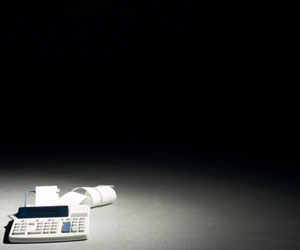Wisconsin Department of Revenue prevails against Nestle USA, Inc. in
property tax case
Limited or no market for a powdered infant formula production facility
does not mean that continued use of such facility is not the highest and
best use. Thus, the Wisconsin Department of Revenue’s $10.9
million property value assessment against Nestle stands.
By Joe Forward, Legal Writer,
State Bar of Wisconsin
 Feb. 8,
2011 – Nestle USA Incorporated finished construction of a plant in
Eau Claire, prompting the Wisconsin Department of Revenue (DOR) to
assess the property at $10.9 million for property tax purposes, an
amount Nestle challenged up to the Wisconsin Supreme Court.
Feb. 8,
2011 – Nestle USA Incorporated finished construction of a plant in
Eau Claire, prompting the Wisconsin Department of Revenue (DOR) to
assess the property at $10.9 million for property tax purposes, an
amount Nestle challenged up to the Wisconsin Supreme Court.
In Nestle
USA Inc. v. Wisconsin Department of Revenue, 2011 WI 4 (Feb. 2,
2011), the supreme court – in an opinion written by Justice
Michael Gableman – unanimously held that the DOR’s $10.9
million assessment was correct for 2003 and 2004.
Assessment of the property required a determination of the
facility’s “highest and best use” and application of
the proper assessment method. The DOR determined that the
facility’s highest and best use was as a powdered infant formula
facility.
Normally, assessor’s look to comparable sales to assess property
value, but the DOR could not find comparable sales of powdered infant
formula production facilities in the United States.
Thus, the DOR used a cost assessment method, which considers the cost
of constructing an exact replica, less depreciation and tax-exempt
components, to determine property value.
Under this method, the assessor “deducts depreciation for
functional obsolescence from the replication cost,” the court
explained.
A functionally obsolete deduction results if the property contains a
specialized feature that a prudent purchaser would not pay extra for
under current market conditions. The Nestle facility contained certain
features – like reverse osmosis water treatment equipment –
that were specifically designed to meet FDA regulations for producing
powdered infant formula.
The DOR’s assessor determined that Nestle’s plant contained
specialized features, but they could be marketed and sold for use in
other powdered infant formula production facilities. Thus, the DOR
denied a functional obsolescence deduction for these specialized
features.
Nestle hired its own assessor, who determined that the plant’s
highest and best use was not as a powdered infant formula production
facility, but as a food processing plant. He then used the comparable
sales method, comparing sales of other comparable food
processing plants, to appraise the plant at $3.59 million.
His alternate appraisal under the cost method found that an exact
replica would cost $17.2 million to build then deducted $13.9 million
for functionally obsolete features that did not have value in the food
processing plant market.
Highest and best use presumption
According to the tax appeals commission and the circuit and
appeals courts, the DOR assessment is afforded a presumption of
correctness, and Nestle did not overcome the presumption that the
facility’s highest and best use was as a powdered infant formula
facility.
Reviewing the decision of the tax appeals commission, the supreme court
concluded that the commission had the requisite substantial evidence to
support its findings.
The court rejected Nestle’s argument that the facility’s
highest and best use was as a food processing plant because there is no
market for powdered infant formula facilities.
“The Commission concluded that neither party found an instance in
the United States where a powdered infant formula production facility
was sold for continued use as a powdered infant formula production
facility,” Justice Gableman wrote. “This finding, however,
is not analogous to a finding that there is no market for
powdered infant formula production facilities.”
The court explained that Wis. Stat. section 70.31, Wisconsin’s
Property Assessment Manual, and case law “do not demand that
evidence of actual sales of properties be put forward to satisfy the
‘marketable’ requirement of a highest and best use
determination.”
The court noted that the FDA regulations on production of powdered
infant formula are recent, the industry is young, and Nestle is the
first plant of its kind in the state.
The DOR put forth evidence that competitors in the powdered infant
formula sector exist, and the industry is expanding. Nestle’s
evidence that no other sales of powdered infant formula production
facilities were found in Wisconsin was insufficient to rebut the
presumption of correctness attributed to the DOR’s assessment, the
court held.
The court also concluded that deductions for functional obsolescence
were not warranted because “[p]rudent purchasers of powdered
infant formula production facilities would value the Gateway
Plant’s specialized features because these features are required
by the FDA regulations and are therefore necessary to the operation of
such a plant.”
Attorneys
Robert Gordon of Michael Best & Friedrich LLP represented Nestle
USA Inc. Assistant Attorney General F. Thomas Creeron III represented
the DOR. Amicus briefs were filed by the City of Eau Claire and the
Wisconsin Manufacturers and Commerce Inc.
